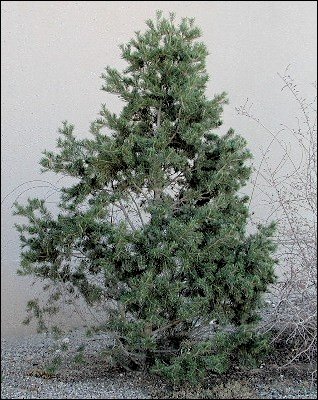

Plants have a number of strategies to improve the likelihood that there will be a subsequent generation. Of course, these are not strategies in the sense that humans use—consciously planning a course to take—but a sequence of actions shaped by natural selection over thousands of generations.
Protection of seeds from the ravages of seed-feeding birds and rodents
has a high priority, for if not enough survive to replace the parents, the population
is doomed. One avenue followed by various plants, such as the piñon pine, is to produce
very few seeds for several years. Sound counter productive? Not when followed by a year
with a bumper crop. Whereas a dependable, year after year, crop helps support a healthy
population of seed predators, a few years of marginal crops results in a diminished
predator population. So that small population simply can't harvest all a bountiful
season can produce. Even sacrificing those seeds that the predators can eat, the plants
have ensured that at least a small number will escape to sprout another
generation.

Contributor: Arthur H. Harris, Laboratory for Environmental Biology, Centennial Museum, University of Texas at El Paso.
Desert Diary is a joint production of the Centennial Museum and KTEP National Public Radio at the University of Texas at El Paso.

p A young piñon.